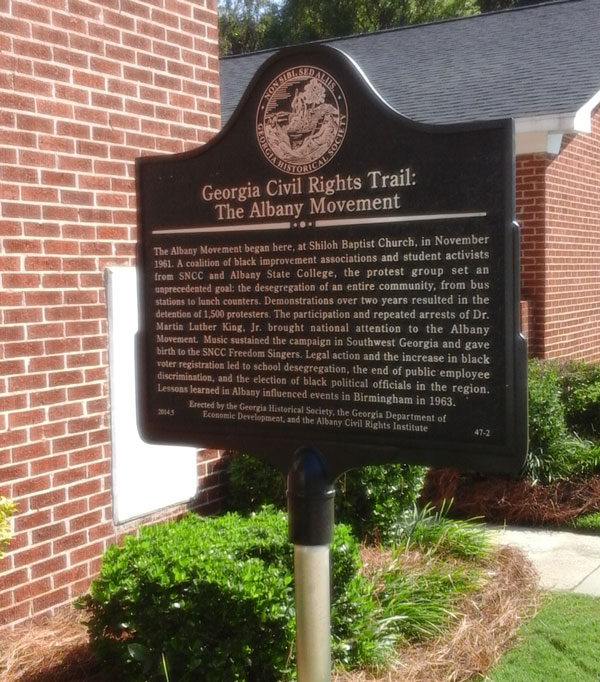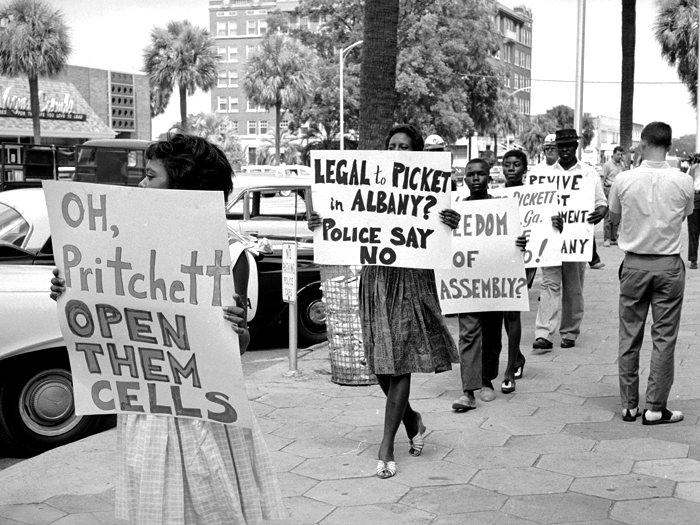Inspired by the theme presented by the National Women’s History Alliance, for National Women’s History Month (NWHM) 2019, “Visionary Women: Champions of Peace and Nonviolence,” and in partnership with the League of Women Voters of Coastal Georgia, this month’s #MarkerMondays explore the role of Georgia women “who have led efforts to end war, violence, and injustice and pioneered the use of nonviolence to change society.”

This week’s #MarkerMonday highlights the role of Annette Jones in furthering the struggle for human and civil rights during the Albany Movement. Ms. Jones was a native of Albany whose discontent with the status quo of the Jim Crow South inspired her to join the local, newly founded National Association for the Advancement of Colored People (NAACP) Youth Council in Albany in 1959. While attending Albany State College, Ms. Jones also became a member of the Student Government Association. When Cordell Reagon and Charles Sherrod from the Student Nonviolent Coordinating Committee (SNCC) arrived in Albany in October of 1961, they sought out and enlisted the help of Ms. Jones to act as a community leader to bridge the gap between SNCC and local groups like the Albany State College student community and the NAACP Youth Council.

The following month, the NAACP Youth Council, SNCC, and other organizations formed the Albany Movement to combat segregation and discrimination. Ms. Jones was a leader throughout the Albany Movement, although she did not have a formal leadership title, serving as a member of the program committee and as an active participant in strategy meetings. She also mobilized large portions of the community through canvassing, voter registration drives, and the creation of a Citizenship School which advanced literacy and civic education and involvement.
Ms. Jones’ and other African-American women, at times constrained within the confines of traditional gender roles, performed vital and courageous work in uniting local groups for the national struggle for human and civil rights. They were area leaders who mobilized their communities.
Explore the links below to learn more about Annette Jones White and the Albany Movement.
Today in Georgia History “Albany Movement”
National Center for Civil and Human Rights “Annette Jones White”
New Georgia Encyclopedia “Albany Movement”
Hands on the Freedom Plow: Personal Accounts by Women in SNCC “Finding Form for the Expression of My Discontent” by Annette Jones White
The Student Nonviolent Coordinating Committee “Annette Jones”
The Student Nonviolent Coordinating Committee “Albany Movement”
GHS houses several collections and books related to African Americans in Albany and African American women in the struggle for human and civil rights.
Ethel Hyer family papers, 1924-1980.
June Bug's Grocery and the Cornfield Jook : a South Albany oral history / Mary Sterner Lawson.
Albany State University : a centennial history : 1903-2003 / Titus Brown.
The Georgia Historical Quarterly published an article related to the Albany Movement which can be accessed on JSTOR. If your library does not have access to JSTOR, you can go to www.jstor.org and create a free MyJSTOR Account.
"The Way Out May Lead In": The Albany Movement Beyond Martin Luther King, Jr.
Further JSTOR reading.
